As a basis for this topic, I strongly recommend reading my basic article "Disadvantages of onboard sound – influence of graphics card, headphone sensitivity and motherboard layout", where I consider both the measurement and the calculation of the relevant values down to the last detail. In any case, this contributes to a better understanding and also ensures security when buying new products such as headsets, headphones and, of course, as in this case, sound cards.
Measurement of output voltage and power RMS
I then measured the output voltage in Volt RMS and the output power in Watt RMS for the most common impedances/output resistors and adjusted the level each time so that the nonlinear distortions moved in the range of less than 0.1 percent. Although this does not replace a professional measurement of the distortion, it is definitely useful as an approximation. At least it's more real than what software programs think they can measure.
The manufacturer advertises with impedances from 16 ohms, but I test here with 4 ohms the suffering ability of the circuit and the gripping of a possible limitation. Almost 320 mW and the 1.13 volts are the result of the limitation of the output current, which at 280 mA is only just above the specs of 250 mA.
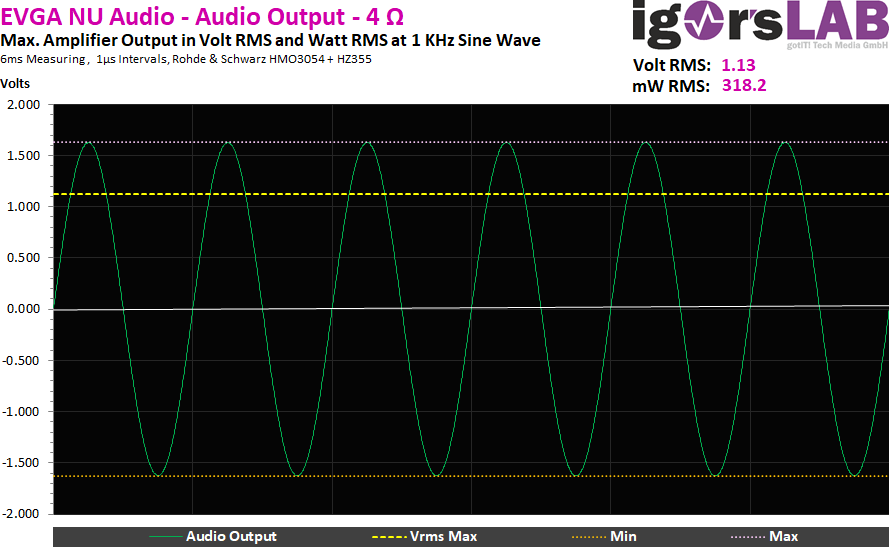
Funnily enough, this output power halves at double impedance, because the voltage remains roughly the same as the measured 1.16 volts, for whatever reason. I would have expected a significant increase here, but I assume that the circuit was simply optimized for high loads.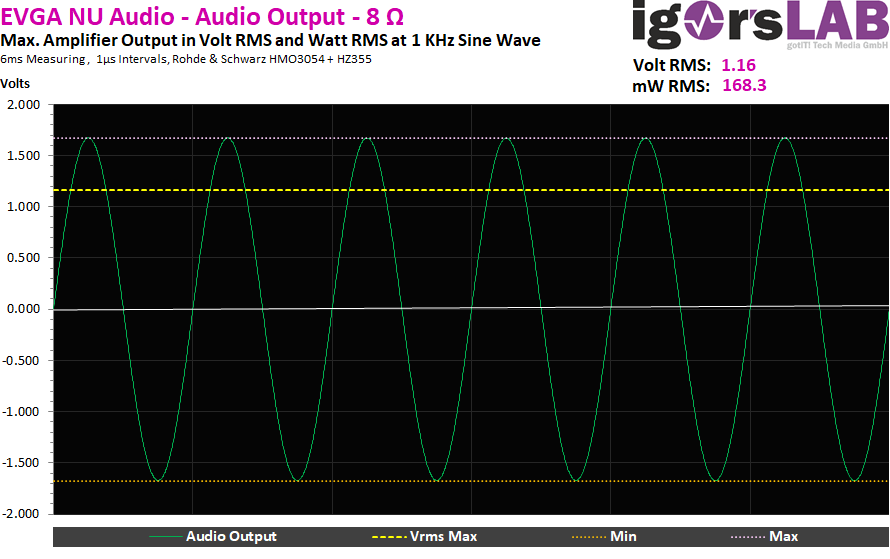
With the usual 32 ohms, Thor's hammer hits, because 1,104 watts and a whopping 5.94 volts are sure to scare any headphones. The eardrum, by the way. Ooh, but good.
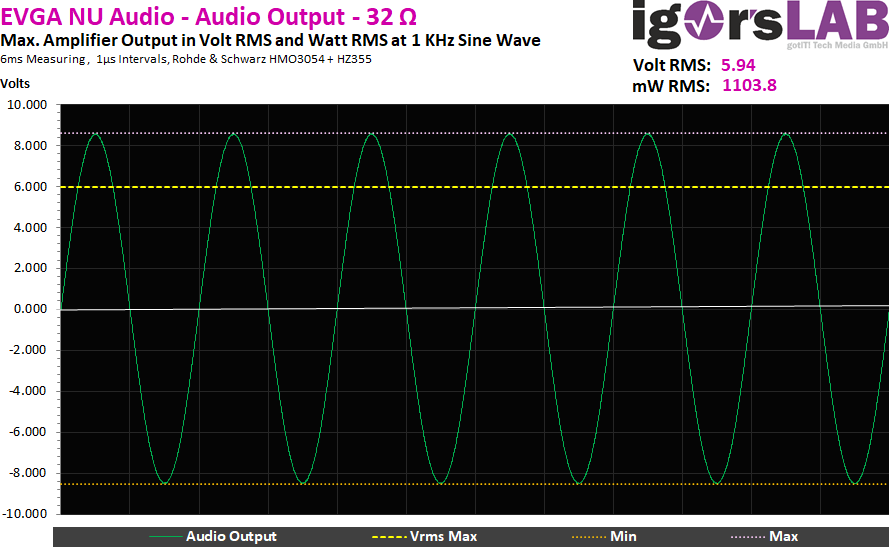
The prestigious 250 Ohm already has 7.5 volts, which is good for an output power of 225 mW per channel.
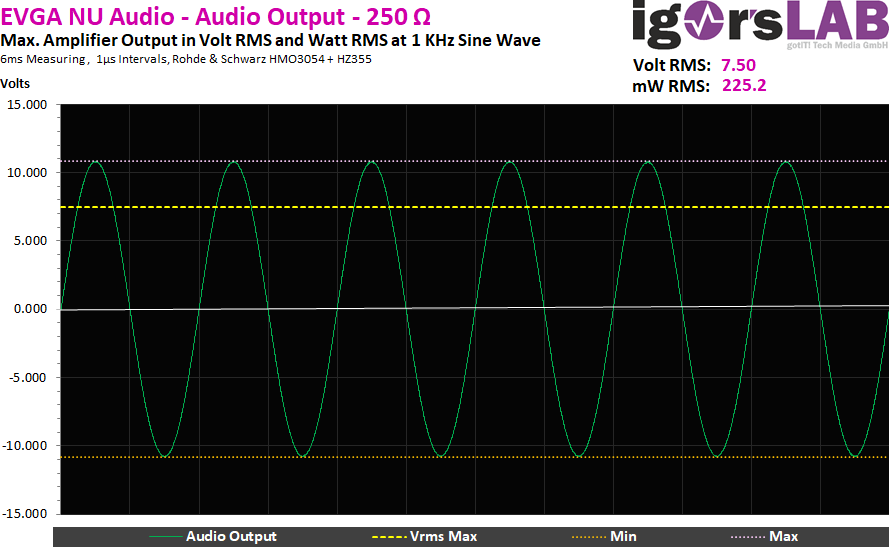
Above 250 ohms, the voltage limitation starts and I measure again a maximum of 7.5 volts RMS. This is, as with 250 ohms, moderate 0.5 volts below the manufacturer's specifications, but may also have been caused by component dispersions.
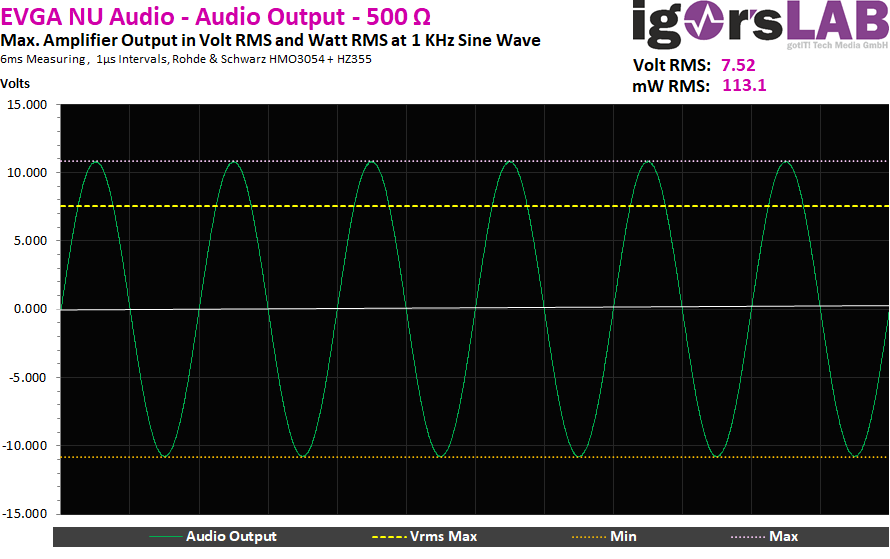
At 1 kiloohm, the output power then scales further with the impedance, because more than the measured 7.5 volts do not work. The almost 60 mW per channel is also sufficient for headphones in this class, although a Beyerdynamic A20 also gleefully blows the EVGA NU Pro in this division. But it also costs significantly more.
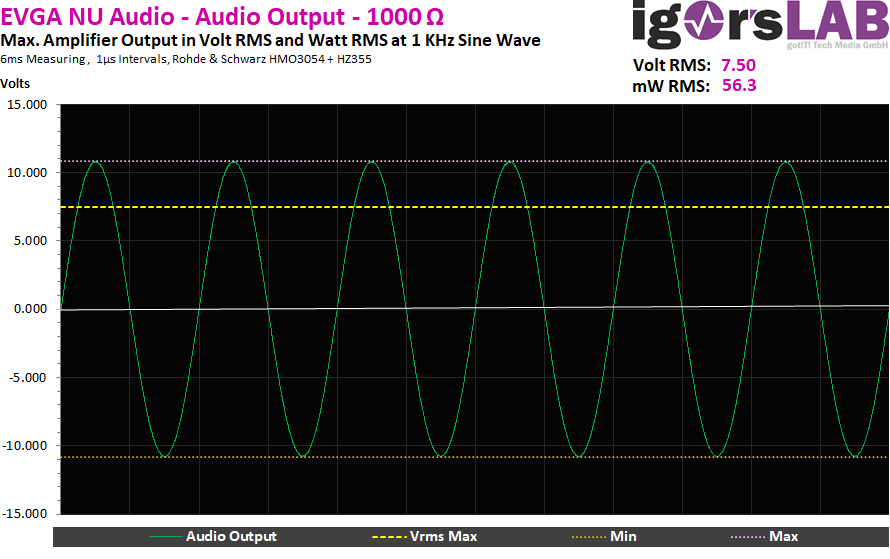
Influence of the graphics card in the idle and under load
After reading the article linked above, this measurement no longer gives up any puzzles. The scarce millivolt RMS at the almost open output is an excellent value, because you never hear this.
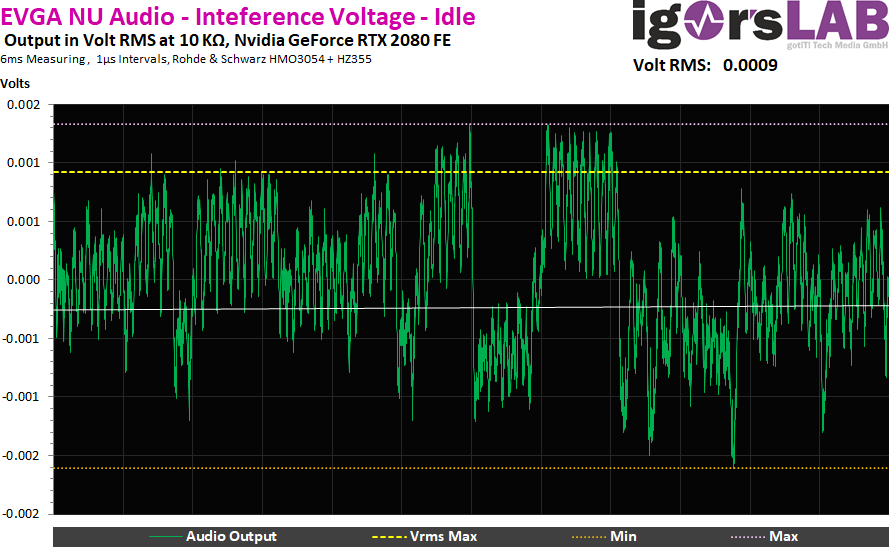
At full gaming load, it's about 1.2 mV, which does not mean a disaster. But – one could certainly have measured less here if the back had been shielded and the sound card would not have kissed the fans of the GeForce RTX with exactly this side. Laboratory measurements do not replace any software even in such a case.
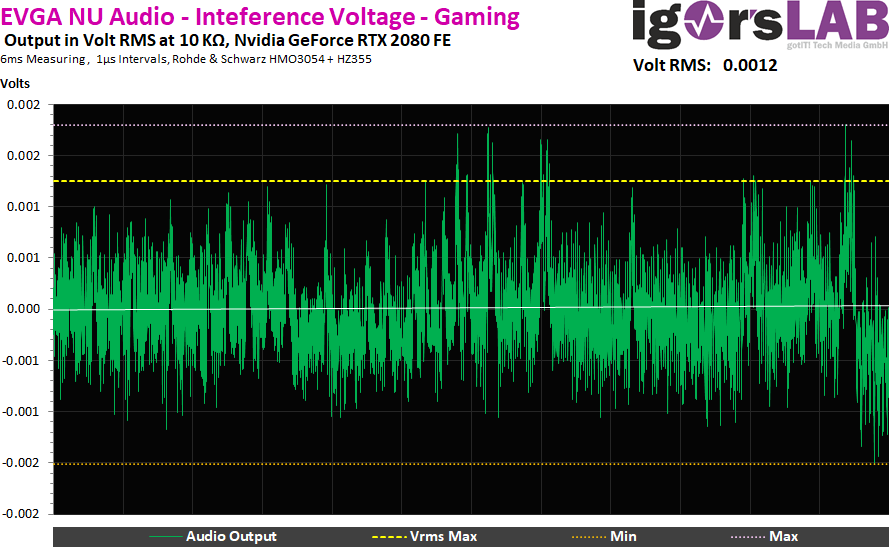
Calculation for output power and sound level
If you buy headphones, the so-called sensitivity is a very important indicator of how loud it can be operated in the end, i.e. which sound pressure level SPL (Sound Pressure Level) it can still reach cleanly at which amplifier power. But you don't always produce a certain sound pressure in the same form. A lot depends on the recorded material. So if you have an average, well-tolerated level (SPL) of e.g. 85 dB (child-proof and not harmful in the long term), e.g. in classical music and its high dynamic range for the peak values, add 25 to 30 dB. This also applies to good games with 12 to 18 dB. Pop music, on the other hand, usually stands at "only" 8 to 12 dB surcharge as a formula of thumb
The first table shows us rather bad headphones with a sensitivity of 85 dB/mW up to 94 dB/mW and which amplifier power to set in order to reach maximum sound pressure levels between 90 and 115 dB. Whether the parts will endure and survive at all is, of course, another matter. If you know the impedance of your headphones, the above measurements also provide the output power in watt RMS, which you now have to look for on the left Y-axis of the curves. The X-axis shows the resulting sound pressure level SPL in dB and the colored curves can be assigned to the respective characteristic sensitivity of the respective headset.
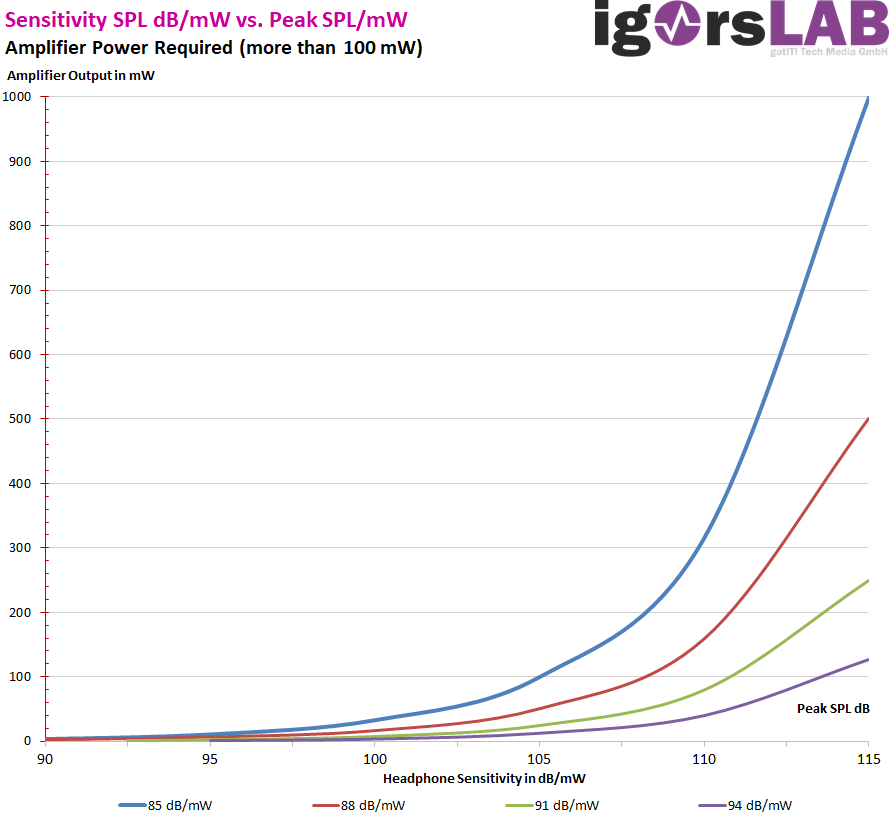
Here I would have the slightly better headphones, which are limited with the output power.
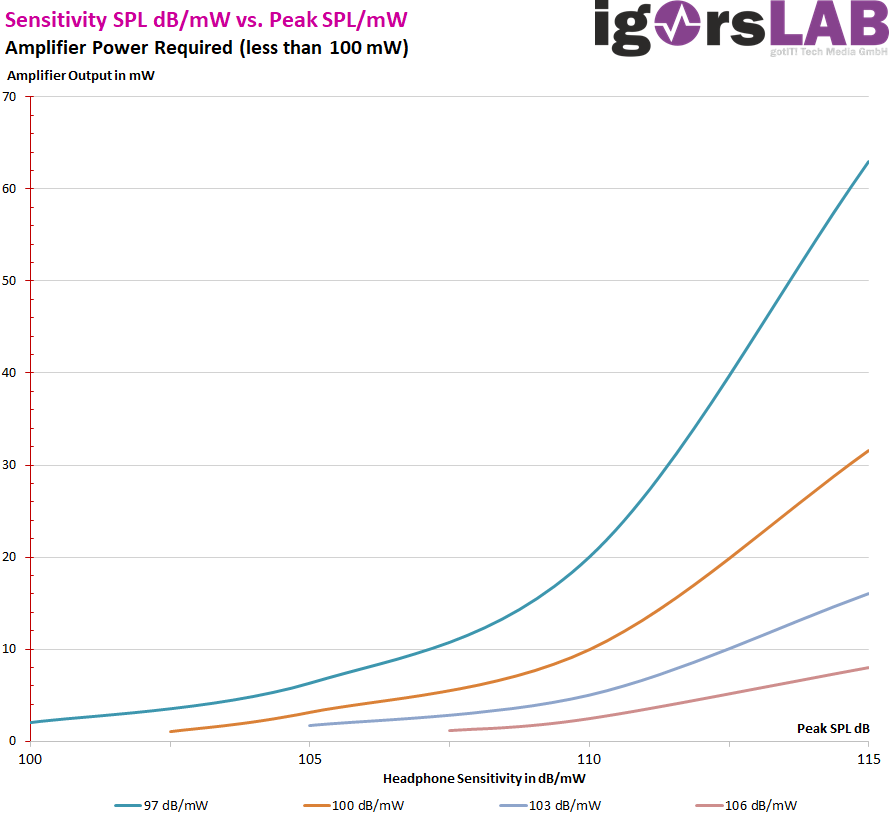
Intermediate conclusion
The built-in headphone amplifier is a heavyweight, especially at 32 ohms. There, this part can blow the march to even the most insensitive consolations, if they do not burn up. I was able to oversteer all the headphones that could be found here, so there was nothing that didn't work. In the low-impestate area, a fairly smart current limit takes effect, in the high-impestate range the voltage is at 7.5 volts at the end. That's still a lot and doesn't have to hide.
The effect of the transients, i.e. the foreign scattering of the graphics card under load, is measurable, but small enough not to have to worry about it. Because it's definitely not audible.

































Kommentieren